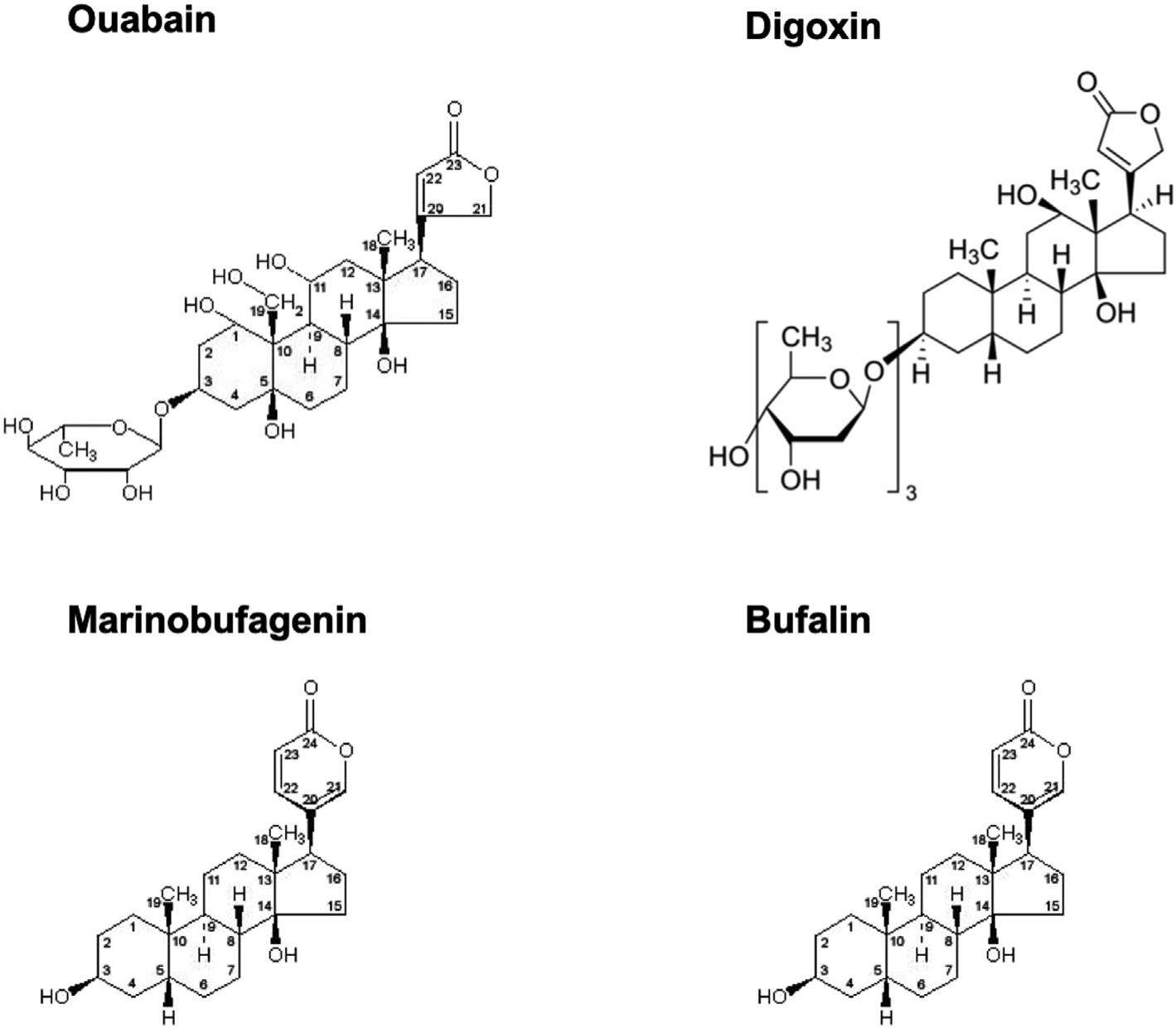
Na, K-ATPase as a target for endogenous cardiotonic steroids: What's the evidence?


With an exception of few reports, the plasma concentration of ouabain and marinobufagenin, mostly studied cardiotonic steroids (CTS) assessed by immunoassay techniques, is less than 1 nM. During the last 3 decades, the implication of these endogenous CTS in the pathogenesis of hypertension and other volume-expanded disorders is widely disputed. The threshold for inhibition by CTS of human and rodent α1-Na, K-ATPase is ~1 and 1000 nM, respectively, that rules out the functioning of endogenous CTS (ECTS) as natriuretic hormones and regulators of cell adhesion, cell-to-cell communication, gene transcription and translation, which are mediated by dissipation of the transmembrane gradients of monovalent cations. In several types of cells ouabain and marinobufagenin at concentrations corresponding to its plasma level activate Na, K-ATPase, decrease the[Na+]i/[K+]i-ratio and increase cell proliferation. Possible physiological significance and mechanism of non-canonical 

